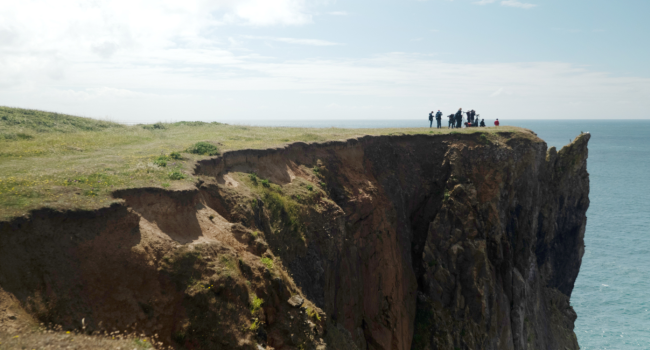Climate change, climatic variation and extreme biological responses

Author(s): Palmer, G., Platts, P.J., Brereton, T., Chapman, J.W., Dytham, C., Fox, R., Pearce-Higgins, J.W., Roy, D.B., Hill, J.K. & Thomas, C.D.
Published: May 2017
Journal: Philosphical Transactions of the Royal Society B Volume: 372
Article No.: 20160144
Digital Identifier No. (DOI): 10.1098/rstb.2016.0144
Abstract
Extreme climatic events could be major drivers of biodiversity change, but it is unclear whether extreme biological changes are (i) individualistic (species- or group-specific), (ii) commonly associated with unusual climatic events and/or (iii) important determinants of long-term population trends. Using population time series for 238 widespread species (207 Lepidoptera and 31 birds) in England since 1968, we found that population ‘crashes’ (outliers in terms of species’ year-to-year population changes) were 46% more frequent than population ‘explosions’. (i) Every year, at least three species experienced extreme changes in population size, and in 41 of the 44 years considered, some species experienced population crashes while others simultaneously experienced population explosions. This suggests that, even within the same broad taxonomic groups, species are exhibiting individualistic dynamics, most probably driven by their responses to different, short-term events associated with climatic variability. (ii) Six out of 44 years showed a significant excess of species experiencing extreme population changes (5 years for Lepidoptera, 1 for birds). These ‘consensus years’ were associated with climatically extreme years, consistent with a link between extreme population responses and climatic variability, although not all climatically extreme years generated excess numbers of extreme population responses. (iii) Links between extreme population changes and long-term population trends were absent in Lepidoptera and modest (but significant) in birds. We conclude that extreme biological responses are individualistic, in the sense that the extreme population changes of most species are taking place in different years, and that long-term trends of widespread species have not, to date, been dominated by these extreme changes.
Notes
The authors thank the thousands of people, mainly volunteers, responsible for monitoring Lepidoptera and bird populations (UKBMS, BBS, CBC and RIS surveys). The UKBMS is run by Butterfly Conservation (BC), the Centre for Ecology and Hydrology (CEH) and the British Trust for Ornithology (BTO), in partnership with the Joint Nature Conservation Committee (JNCC), and supported and steered by the Forestry Commission (FC), Natural England (NE), Natural Resources Wales (NRW), Northern Ireland Environment Agency (NIEA) and Scottish Natural Heritage (SNH). Light-trap data were provided by the RIS, a National Capability supported by the UK Biotechnology and Biological Sciences Research Council (BBSRC); we thank P. Verrier, C. Shortall, and the survey volunteers for these data. Rothamsted Research is a national institute of bioscience strategically funded by BBSRC. Climate data were provided by the UK Met Office. CBC was funded by the BTO and JNCC, and BBS by the BTO, RSPB and JNCC (on behalf of CCW, NE, CNCC and SNH), with fieldwork conducted by BTO members and other volunteers. Bird population trends for England data were provided by a partnership jointly funded by the BTO and JNCC.Staff Author(s)







Share this page